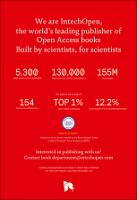Chapter Waterborne Acrylic/CeO2 Nanocomposites for UV Blocking Clear Coats
Author(s)
Leiza, Jose R.
Aguirre, Miren
Paulis, Maria
Language
EnglishAbstract
The encapsulation of inorganic nanoparticles into polymer particles opens the door to countless applications taking advantage of the properties of both phases. In this chapter the UV absorbing capacity of CeO2 nanoparticles and the film forming capacity of acrylic polymers are combined. A synthetic route to produce waterborne acrylic/CeO2 hybrid nanocomposites for UV absorbing coatings applications is presented. This strategy leads to encapsulated morphology of the CeO2 nanoparticles into the polymer particles and therefore to the lack of agglomeration during film formation. A mathematical model developed for inorganic/organic hybrid systems is able to explain the morphology evolution from the initial monomer droplet to the polymer particles. The films cast from these latexes are transparent and show excellent UV absorption that increases with the amount of cerium oxide nanoparticles in the hybrid latex. Finally, the photoactivity behavior that the CeO2 nanoparticles may have on the polymeric matrix is studied, discarding additional effects on the acrylic polymer matrix.
Keywords
waterborne polymer dispersions, CeO2 nanoparticles, hybrid nanocomposites, encapsulation, UV absorptionDOI
10.5772/intechopen.81332Publisher
InTechOpenPublisher website
https://www.intechopen.com/Publication date and place
2019Classification
Solid state chemistry


 Download
Download